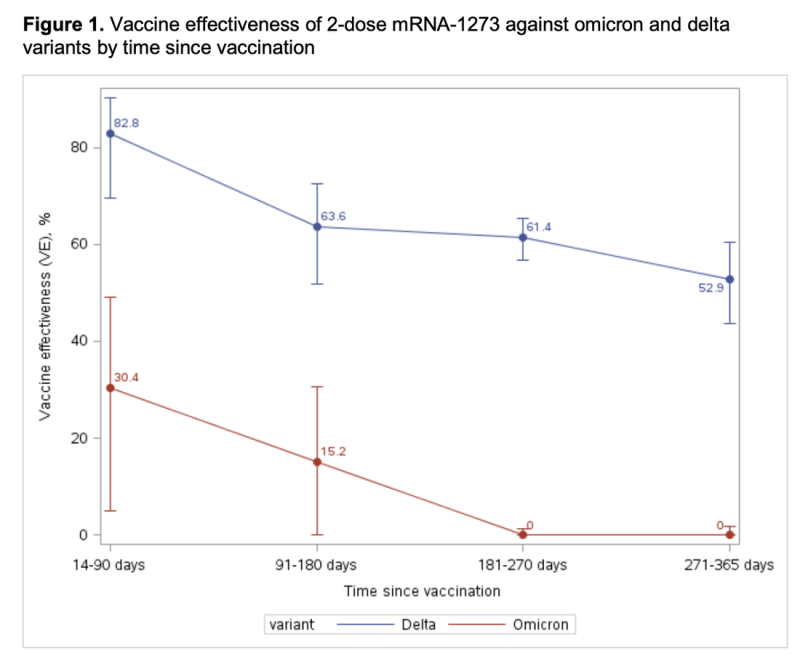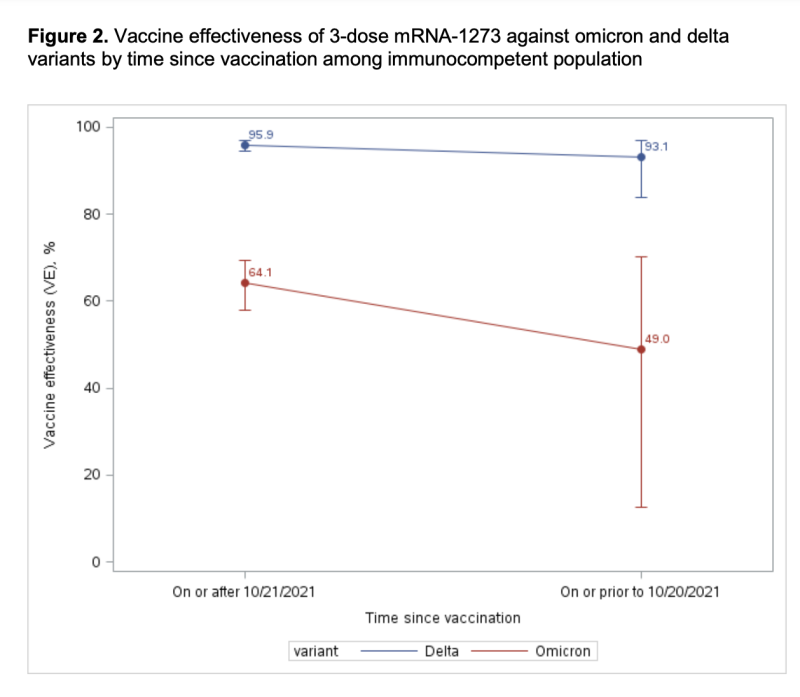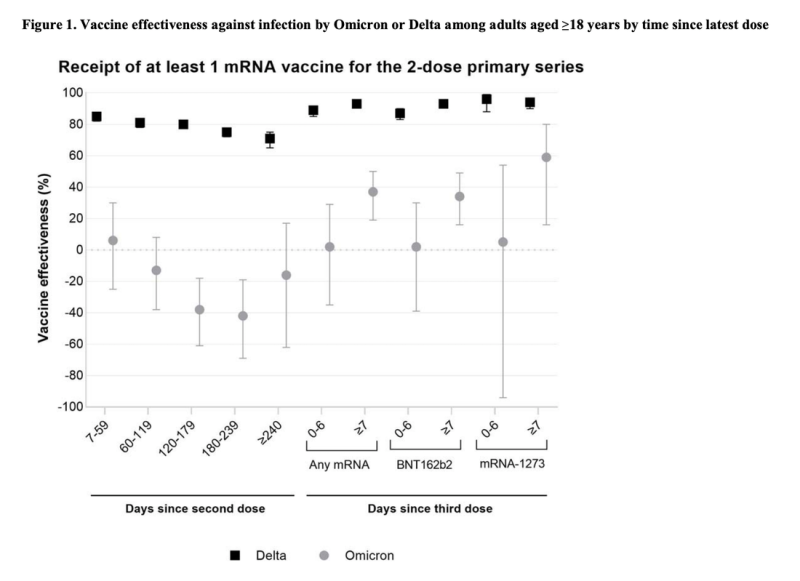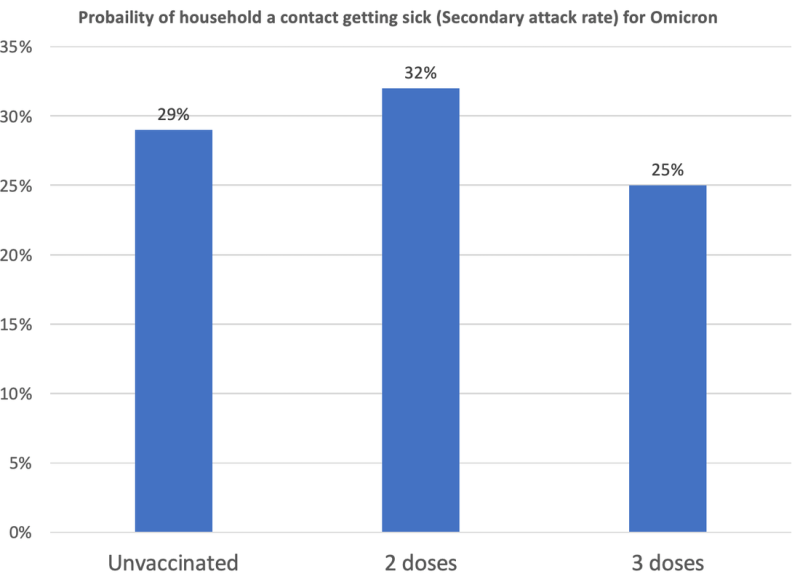A number of studies are converging on the fact that 2 doses of vaccination has poor vaccine effectiveness against Omicron. 3 doses does slightly better, but the effect will rapidly wane as antibody titers fall, and infection is certain as the number of exposures increase. These studies have immediate implications for vaccine and health-care policies.
First, Kaiser Southern California. Here are data for 2 doses of mRNA for effectiveness against Omicron. Follow the red line. Over time, it is 0%.


3 doses does better, for now. But look at the confidence interval of the red line. We have no idea if it will be preserved.


Now, let’s turn to the Province of Ontario, vaccine effectiveness 2 dose or 3 dose is in the toilet; Note the y axis, and broad confidence interval post dose 3. Here dose 3 would fail to meet the FDA standard of at least 50% VE, with lower bound CI >30%— the standard for EUA.


Now let us examine Denmark; here are the raw probabilities of secondary attack in a household.


Putting these 3 studies together: what is the conclusion? Two doses of vaccine does nothing or almost nothing to stop symptomatic sars-cov-2. Three doses barely does anything, and the effect will likely attenuate over time. Finally, as the number of exposures increase from 2 to 22 to 202, the cumulative probability of infection will approach 1.
NOTE: This is not an argument about the benefits of vaccination for the individual— vaccines likely (and evidence shows they) still have great protection against severe disease; instead this is an argument about the effects of vaccination on symptomatic diseases, and (some good portion of) transmission.
Conclusion: you cannot contain the viral spread of omicron by boosting.
The moment we see that, the policy conclusions start to fall into place.
Booster mandates make no sense for young people/ working people/ hospitals/ anywhere. Young people will only be, at best, slightly less likely to spread for a short period of time, but the epidemic waves will eventually over take them. Boosting should happen in populations where it further reduces severe disease and death— aka older and vulnerable people. Focus on that and let college kids off the hook.
Some argue there is still a justification to boost because you can help prevent hospitals from being overwhelmed. Sadly, that argument fails in several ways. First, you have no evidence boosting younger people will slow hospitalizations. A vaccinated younger person already has very low risk of being hospitalized. Boosting may not further lower what is already very low. We simply have no evidence. Event rates are sparse at those ages.
Second, this argument would mean the state could tell people what to eat and how much to exercise, and how much to drink. Food, drink and obesity are drivers of hospitalizations. Instead, we have not accepted these infringements in the past. The justification for vaccine mandates is that it helps curb population spread. The latest vaccine effectiveness figures show that effect is now nearly gone, and transient at best. Ergo, the mandates are unjustified.
Firing nurses and other health care workers for being non-compliant with mandates is now defeating. We are better off having them work. Time to bring them back.
Draconian avoidance of omicron is not tenable. Omicron or a future variant will eventually find us all. It may even be preferable to encounter omicron a few weeks or months after your last vaccine than a year or two later, as the infection may be milder. As I explain in a prior post, wearing an n95 makes no sense.
It is time to face reality.
Reposted from the author’s blog.
Join the conversation:


Published under a Creative Commons Attribution 4.0 International License
For reprints, please set the canonical link back to the original Brownstone Institute Article and Author.









